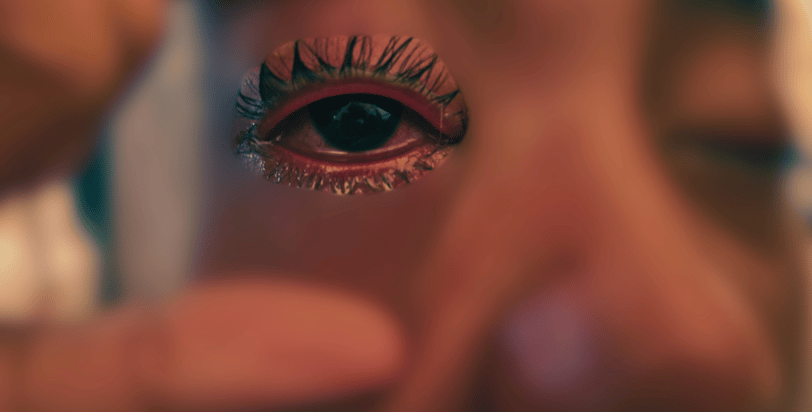The Hidden Dangers of Contact Lenses
A personal reflection on the risks of contact lenses, sharing a real-life experience to warn readers about potential dangers and lessons learned. #MorningCoffeeThoughts


This morning, as I sip my coffee, my thoughts linger on a recent ordeal my family went through—an ordeal that left us both exhausted and overwhelmed. My daughter, a vibrant young woman who loves sports and enjoys life to the fullest, suffered a severe corneal scratch from a pair of contact lenses. What should have been a simple vision aid turned into days of intense pain and missing an important tennis tournament she couldn’t play in.
It started innocently enough. She bought a pair of lenses from an optical clinic in a shopping center. The box they handed her was dusty—something that should’ve been a red flag. After cleaning it off, she wore the lenses for less than three hours. When she removed them, her vision felt foggy, but she brushed it off, thinking it was no big deal.
The next morning, she woke up screaming in pain. Her eye was red, swollen, and so sensitive that even the faintest light was unbearable. We rushed her to the ER—not once, but twice. The doctors prescribed eye drops, but instead of relieving her pain, they made things worse. Every application was torture, leaving her in agony.
To add to her stress, she was to compete in a tennis tournament, an event for which she had trained for weeks. Instead of playing on the court, she spent those days battling unrelenting pain.
We sought help from a family member, Dra. April, who is an ophthalmologist, after exhausting other options. I’m withholding her last name for privacy, but her swift action was a turning point. She carefully reviewed the medications my daughter had been given, advised us to stop using them, and prescribed a new regimen: two specific eye drops and a low-dose celecoxib. She also explained that one reason for my daughter’s extreme pain might have been the preservatives in the previously prescribed eye drops.
I didn’t know much about preservatives in eye drops, so I did some research. Preservatives like benzalkonium chloride (BAK) are commonly added to eye drops to prevent bacterial growth and extend shelf life. While effective for occasional use, frequent applications—especially on sensitive or injured eyes—can cause irritation, dryness, or even corneal damage.
The ophthalmologist specifically recommended preservative-free eye drops to avoid further irritation. These come in single-use vials or specialized bottles that prevent contamination without relying on preservatives.
For the first time in three days, my daughter wasn’t screaming while applying the drops. She finally slept well last night, and the relief on her face was priceless.
The Hidden Dangers of Contact Lenses
This experience made me realize that contact lenses, while convenient, carry significant risks. Watching my daughter suffer through unrelenting pain from a corneal scratch highlighted just how dangerous improper handling or poor-quality products can be. These risks, often underestimated, have made me reevaluate the way we view such common vision aids.
To better understand the potential dangers, here are some of the risks that contact lens wearers should be aware of:
Corneal Abrasions: Scratches on the cornea, like what my daughter experienced, can cause extreme pain, blurred vision, and sensitivity to light. If left untreated, they can lead to infections or permanent damage.
Eye Infections: Contact lens wearers are at higher risk for infections like keratitis, a painful inflammation of the cornea that can cause serious complications if not treated promptly.
Corneal Ulcers: These are open sores on the cornea that can result from untreated injuries or infections. They’re extremely painful and often require aggressive treatment.
Chemical Exposure: Non-prescription or decorative lenses may contain harmful chemicals. Always buy lenses from authorized retailers to avoid this risk.
Corneal Swelling and Inflammation: Prolonged or improper use of contact lenses can lead to swelling or conditions like giant papillary conjunctivitis, causing discomfort, redness, and irritation.
This whole experience has been a sobering reminder that even the smallest choices, like the decision to wear contact lenses, can carry unexpected consequences. It’s taught me to approach these decisions with more thought, care, and awareness of the risks involved.
Recognizing the Warning Signs
If you or someone you love wears contact lenses, it’s critical to recognize early symptoms of trouble. Contact lenses sit directly on the cornea, which is highly sensitive and vulnerable to injury or infection. Ignoring even minor discomfort can lead to more serious complications.
Remove the lenses and seek professional help immediately if you notice:
Persistent pain or discomfort that doesn’t subside.
Redness, swelling, or excessive tearing that lasts longer than a few hours.
Sensitivity to light, especially if it’s accompanied by pain or blurred vision.
A gritty sensation, like there’s something in your eye that won’t go away.
Blurred or foggy vision that doesn’t improve after removing the lenses.
These symptoms could indicate corneal abrasions, infections, or even early signs of corneal ulcers. Time is critical, as early intervention can prevent a minor issue from becoming a major problem. Delays in treatment might increase the risk of permanent damage or vision loss. Always talk to your eye doctor at the first sign of trouble.
Proper Care and Handling
One of the biggest lessons we learned is how vital proper lens care is—a lesson that came painfully through my daughter’s ordeal. Before this experience, I had no idea how even small oversights in care could lead to such serious consequences. Now, every detail matters, from washing hands thoroughly to ensuring lenses are stored and cleaned properly. Here are some essential tips we’ve committed to as a family:
Do’s:
Wash your hands thoroughly before handling lenses.
Use fresh, doctor-recommended cleaning solutions.
Replace your lens storage case every three months.
Follow the recommended wearing schedule and replace lenses as prescribed.
Remove lenses before swimming or showering.
Avoid wearing lenses for longer than the recommended duration, even if they feel comfortable.
Ensure your lens case is cleaned daily and left open to air dry to minimize bacteria buildup.
Don’ts:
Never use tap water or saliva to clean lenses.
Avoid “topping off” old solution with fresh solution.
Don’t sleep in lenses unless prescribed by your doctor.
Never wear lenses that come in damaged or tampered packaging.
Don’t share your contact lenses with others, even for a short time. Sharing increases the risk of bacterial transfer.
Proper care not only ensures your lenses remain safe to use but also protects your eyes from potential harm. Neglecting these small yet crucial steps can lead to preventable injuries or long-term damage.
Choosing a Safe Source
The dusty packaging of the contact lenses my daughter purchased should have been the first warning sign. Looking back, it’s a detail I can’t ignore. This experience has taught me to scrutinize every purchase more carefully, especially when it comes to products as delicate and essential as contact lenses. The clinic where my daughter bought her lenses might have seemed reputable, but the dusty packaging was a warning sign we missed. This seemingly small detail raised concerns only in hindsight, but it shows why you should check the condition of the products you purchase.
Contact lenses are medical devices, not just cosmetic accessories, and they require proper storage and handling at every stage—from the manufacturer to the retailer.
To avoid similar risks, always purchase lenses from authorized retailers and ensure they meet safety standards. Consider the following steps when choosing a source for your contact lenses:
Authorized Sellers: Verify if the seller is approved by the manufacturer. Most manufacturers provide a list of authorized retailers on their websites. This ensures the products are genuine and haven’t been tampered with or exposed to unsafe storage conditions.
Proper Storage: Ensure lenses are stored in clean conditions. Look for clinics or shops where the environment is clean, well-maintained, and professional. Dusty or improperly handled packaging can indicate neglect, which may affect the quality and safety of the lenses.
Customer Feedback: Check reviews to confirm the seller’s reliability. Look for consistent positive feedback on customer service, product quality, and adherence to proper storage practices. Beware of online sellers with mixed or unverified reviews.
Avoid Non-Prescription Vendors: Stay away from novelty shops or unauthorized online platforms selling decorative lenses. These are often not FDA-approved and may contain harmful chemicals or contaminants.
Choosing a reputable source ensures the quality of your lenses and helps prevent issues that can arise from poorly manufactured or improperly stored products.
Lessons Learned
This ordeal has been a profound wake-up call for my family. I never imagined that something as small as a contact lens could cause such immense pain and disruption. Watching my daughter suffer reminded me of how fragile our eyes are and how much we take them for granted. It also made me realize the importance of vigilance—not just in handling lenses but in questioning everything: from packaging to discomfort and even prescribed medications. I liked the idea of switching from glasses, but after witnessing my daughter’s experience, I’ve completely changed my mind. The risks outweigh the convenience for me.
This challenging experience also reminded me how fragile our eyes are and how even seemingly minor issues can spiral out of control without proper care. It reinforced the importance of questioning everything—packaging, discomfort, and even the medications prescribed. If something doesn’t feel right, always seek a second opinion.
Protecting Your Vision
For those using or considering contact lenses, handle them carefully and stay alert to any discomfort. If something feels off, remove your contact lenses and talk to your eye doctor promptly. These small discs may offer convenience, but they also carry risks that can’t be ignored.
If you’re thinking about trying contact lenses for the first time, take the time to research, consult a trusted eye care professional, and weigh the risks against the benefits. For current users, ensure your lenses are always handled, stored, and cleaned properly. Minor mistakes can have major consequences, as I’ve seen firsthand.
More importantly, trust your instincts. If something feels wrong, even if it seems minor, act on it immediately. Early intervention and vigilance are key to preventing serious complications.
Our eyes are precious. They allow us to experience the beauty of the world around us and deserve nothing less than the utmost care and protection.
A Heartfelt Thanks to Dra. April
I would be remiss not to express my deepest gratitude to Dra. April. Her expertise, quick thinking, and compassionate care brought much-needed relief to my daughter when we were at our wits' end. Dra. April’s ability to assess the situation and prescribe the right treatment was nothing short of remarkable. Her guidance not only eased my daughter’s pain but also reassured us during one of the a deeply challenging experience for our family.
Thank you, Dra. April, for going above and beyond to ensure my daughter’s recovery. Your kindness and professionalism will forever be etched in our hearts. ❤️
Contact us
subscribe to morning coffee thoughts today!
© 2024. All rights reserved.


